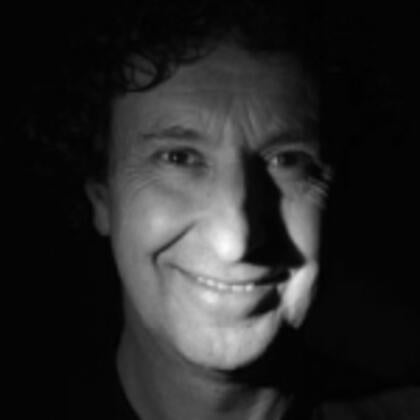In Mahler's Footsteps: Mahler's relationship with the natural world
Share
- Details
- Transcript
- Audio
- Downloads
- Extra Reading
Architect Keith James Clarke experiences the Austrian landscape and scenery that inspired Mahler. He travels by foot and bicycle to rediscover Mahler's much-loved haunts.
Download Transcript
19 September 2012
In Mahler’s Footsteps:
Mahler’s Relationship with
The Natural World
Keith James Clarke
Introduction
The focus for this lecture is to consider a key period of Mahler’s life: the summers between 1893 and 1896. During this period he lived in the Salzkammergut in Upper Austria. I shall consider where he went, whom he met, and how Mahler’s imagination was inspired by this place. In order to get to grips with this subject I carried out an investigatory visit during September 2010, returning again in May 2011 with my cameraman, Laurie, to make a DVD that celebrates Mahler’s time here. Sections of this DVD, In Mahler’s Footsteps, will be shown during the lecture and will describe two sites: Bad Ischl, a wonderful spa town; and Grundlsee, a mountain lake. Mahler frequented both places. My previous Mahler studies had focussed on architectural-environmental considerations. First I looked at the three composing huts in Austria. Later I considered the 1892 visit to London and Mahler’s conducting schedule at Covent Garden and Drury Lane.
Mahler’s Life at this time
In general terms, from 1892 onwards Mahler conducted for nine months of the year. At this time he was the Director at the Hamburg Opera and looked forward to the summer months when he could combine his relish for composition with recreational activities. Mahler was unmarried. Who would have guessed that within a few years he would become the Director of the Imperial Opera House in Vienna and, later, meet and fall in love with Alma Schindler, a marriage that would bear two daughters? One thing was clear. Here in Upper Austria he had established a very successful work pattern that would be repeated in other locations. He arranged for the construction of his first composing hut beside the shores of the Attersee at Seefeld. Two more huts followed; one in Southern Austria and another in the South Tyrol. These modest buildings were for his exclusive use and provided the right atmosphere for his work: friends said he was never more relaxed and communicative than during the summers at his private retreats.
The Salzkammergut
It was here Mahler spent afternoons and evenings with friends and family, carrying out challenging (and very ambitious) hikes to the valleys and peaks of this stunning landscape. The Salzkammergut is located some 30 miles east of Salzburg- close to the Austro-German border and covers approximately 25 by 25 miles. The area resembles the Lake District in North West England, which also has lakes radiating from its centre. Its terrain was shaped during the Ice Age when ice masses gouged the ground to form valleys: as the glacier receded the voids were filled with melted water and some 40 lakes created.
In Mahler’s Footsteps
This new study would place the natural world at its centre. Mahler’s love of the Salzkammergut and neighbouring Berchtesgaden to the west was matched by the devotion Elgar had for his Malvern Hills in Worcestershire. Elgar too explored his environment by foot and bicycle and found the place a source of inspiration. In Mahler’s case he composed during the early morning and later in the day he swam, ran and cycled. His skin had a healthy glow. He was fit and healthy, as illustrated by the following foray into the Great Outdoors. In the summer of 1896 he trekked from Bad Ischl to Bad Aussee, then made his way to Grundlsee to climb Zwieselalm, (1587m) via Hallstatt. Later he met friends back at Ischl before returning with them to Steinbach. This 70km round trip was all confirmed by a postcard dated 3rd July! My preparation for the trip in May 2011 consisted of regular walks and cycle rides. I spent the last few days before departure practicing with my cameraman, checking back-up equipment and, above all, crossing my fingers for good weather. Mahler said he was unclear why he continued to return to the Salzkammergut. The region is subject to strong winds, rain, poor visibility and cold temperatures- even during the summer! Walking here, let alone filming, can be difficult.
Bad Ischl
With a hint of apprehension we set off, bound for Bad Ischl, on 10th May 2011. The 3.20am train, flight from Gatwick to Munich and hired car journey (250km), had gone well and all was set fair for three days of intensive filming. Bad Ischl is a beautiful spa town located at the centre of the Salzkammergut. The early inhabitants nurtured the development of the region including its salt mining industries, leading to its establishment as the administrative headquarters. It is surrounded by trees and mountains and has attracted members from high society on account of its spas, clean air and facilities for treating rheumatic ailments. More on this later. In fact such was the appeal of Bad Ischl that Emperor Franz Joseph brought his family here during the summers between 1854 and 1914, which accounts for the grand architecture. He said that Ischl was “heaven on earth”. Anton Bruckner came here too, along with Franz Lehar and Johann Strauss. Bruckner became the Court Organist between 1863 and 1890- playing for the Emperor on his birthdays and other special occasions at St Nicholas’s Church.
The Imperial Villa is in the foreground; the steeple of St Nicholas’s Church
where Bruckner played is behind.
It does me good to see the Old Man now and then. He is a gnarled and stocky tree, but bears sweet, ripe fruit, and it is a joy to contemplate that mighty, leafy trunk”. Mahler refers to Brahms in his letter to Anna von Mildenburg. June 1896.
Mahler made annual summer visits to see Johannes Brahms at Bad Ischl. He would drop by for lunch at Brahms’s house (sadly it no longer exists, but a building does sit on the site) and they would talk together as they made their way along the River Traun that flows through the town. Mahler was about half Brahms’s age. But according to Mahler their conversations were “disappointing”. Mahler, being Mahler, sought a rich, philosophical discussion (remember his conversation with Sibelius in Finland?) but Brahms did not, preferring to direct his energies towards composition.
This is the site where Brahms lived for twelve summers.
Mahler took full advantage of the facilities at Bad Ischl taking, “to the waters for several days”. Not being one to decline an opportunity I felt the need to experience this myself. It is not possible to say exactly which spa Mahler went to, so I chose the one recommended by my Hotel Manager. Armed with a towel (I was instructed to discard it) I entered a sauna and sat for 20 minutes, then I was invited to step outside and rub unrefined salt (from the Salzkammergut) into my skin and return to the sauna. After a minute or two a man entered with a large flag, which he waved vigorously from side to side, producing a strong air current. This hot, humid air flowed over the salt on my skin to produce an unforgettable intensity. I left feeling refreshed. Mahler would have experienced this too; it has been practised at Bad Ischl for 400 years!
Grundlsee
With affectionate feelings about this alpine town I hired a bicycle from the hotel to rediscover one of the lakes Mahler visited here: the Grundlsee. I was informed that I could hire an “electric assisted” (battery powered) bike that would help me negotiate the gradients! As this would not have been an option for Mahler, reluctantly I declined! I placed my bike in the train carriage and approximately 15 minutes later arrived at another small town, Bad Aussee. My cycling trip had begun. I passed fine examples of vernacular architecture- small timber buildings that existed in Mahler’s time. Locals chopped logs in preparation for the winter. Soon the terrain changed, becaming steep with metal bridges criss-crossing the stream that flows from the Grundlsee. Flower meadows, low-level foliage and long, lonely paths flirted with the stream; above, sunlight filtered through the tree canopy.
This narrow pathway defines Mahler’s route.
As the gradient flattened out my expectations of the Grundlsee grew! I had been cycling about 12km. I knew that I was following Mahler’s route- it is the only route from Bad Aussee. I arrived at a clearing and caught sight of a wide view with an expanse of blue water. The lake was unoccupied and surrounded by a necklace of cliffs.
Peaks approximately 2000m high surround the Grundlsee.
I had arrived at my destination. I had seen what Mahler had seen and achieved my objective- the Grundlsee lay impressively before me. A man was assembling a canoe from a kit of parts and surrounding it with canvas ready for a trip across the lake. Laurie and I had been lucky: both my earlier visit and the ‘shoot’ had been blessed with perfect weather. We freewheeled all the way back to the railway station- we both knew this place could be less hospitable!
Schafberg
Before returning to London I needed to visit one more Mahler haunt. From Mahler’s composing hut beside the shores of the Attersee at Steinbach one can see an imposing mountain: Schafberg. It’s some 5 miles to the south-west. Mahler would have looked at this as he worked on his 2nd and 3rd Symphonies. I needed to get to the top (as Mahler presumably had) and view the Salzkammergut in all its glory. The Schafberg Mountain Railway was completed during Mahler’s time here in 1893 and would have delivered him to the top, (1783m). It is the highest steam cog- wheel railway in Austria: the mechanism locks the train onto the track, preventing it from loosing traction on the slopes.
This train delivers passengers to the top of Schafberg, from which Mahler would have witnessed a breathtaking 360-degree view of seven lakes.
I observed an extraordinary natural phenomenon here, which Mahler too may have witnessed. The face of the far side of Schafberg (from Mahler’s hut) is vertical. Rising warm air from the valley was on a collision course with the chilled air, in the form of clouds, above. Dramatically, the two met producing mist that, one moment, gave rise to a breathtaking view of the mountain range, and the next obliterated all sight with a grey blanket. Miraculously we caught it on film- it was one of the most extraordinary sights of my life. It reminded me of Mahler’s 3rd Symphony.
Conclusion
Here Mahler found a heroic landscape with soft breezes, birdsong, and mist hovering above shimmering blue lakes. Above, dramatic outcrops of rock cut an impressive profile against a sky unmarked by aircraft vapour trails. Below, lonely pathways lead to dramatic and breathtaking views.
The 3rd Symphony was created in the Salzkammergut. In this work Mahler makes a journey in music, from a depiction of the physical world, through a series of movements, to a spiritual state- ‘What love tells me’. These original titles- ‘Pan awakes: when Summer Marches in’, ‘What the animals in the woods tell me’, ‘What the flowers in the meadow tell me’, demonstrate Mahler’s preoccupation with nature; indeed this work is his ‘Nature Symphony’. The first movement is an amazing creation of the forces of nature, a world that he witnessed here. It is a personal and fantastic vision- the arched grandeur of the sound-world led Mahler, upon completion, to question how he ever managed to write it! The music has its roots in this spectacular landscape: long flowing melodies move forward with the steep modulations of Mahler’s Salzkammergut, the outdoor tunes racing towards an impressive conclusion. In the Third Movement Mahler lays bare his supreme skill and imagination in creating the ‘soft-spongy-romantic’ vision of a ‘dewy’ landscape, and other moments in the orchestration reveal a fresh open-air spaciousness. The climax towards the end is devastating, lusty breezes from the Salzkammergut blow through the musical texture. The fourth movement, ‘What night tells me’, beautifully captures the nocturnal atmosphere of this place. I marvelled at it here myself: the constellations of stars shining through the darkness. The final movement is beautiful, the conclusion dramatic as a pair of kettledrums work in unison.
Mahler reflected on the beauty on this place. The intrinsic perfection of living things- a single flower, a spider’s web for example- are masterpieces of creation. His friend and collaborator Bruno Walter expressed Mahler’s feelings about everything that was about him here. He pointed out that “his very being” had an affinity with the natural world, continuing that “nature itself seems to be transformed into sound”. Mahler’s 3rd Symphony belongs to this place: it is from this land. He jotted down ideas as he travelled around: the work was shaped by the sounds, grandeur and beauty of this region. The Symphony’s beginning captures this immensity: in this landscape one is reminded of something larger than oneself. As I trekked, cycled, and stared, fragments of Mahler’s music flowed into my mind. My DVD: In Mahler’s Footsteps is my response to this place: a place exquisitely embraced in Mahler’s art.
Keith relaxes in a boat as he travels across the Grundlsee.
The following material is obtainable from:
www.mahlersheavenlyretreats.com
DVD: In Mahler’s Footsteps. Published 2011. (DVD + trailer + slideshow) Reader: Richard Burnip.
DVD: Mahler’s London. Published 2009.
Book: Clarke K. J. Mahler’s Heavenly Retreats: Encounters with the Master’s ‘Composing Houses’ Oblique Angle Publishing. 2007. (Includes DVD and CD)
ISBN 978-0-9554080-0-7
About the Speaker
Architect Keith James Clarke has practiced in Cambridge, Birmingham and London. He has lectured at Chelsea, Birmingham, and Central St Martins and at Ecole d’ Architecture in Paris. In 1988 he made his first film about one of his private commissions. He has also completed studies on the environmental aspects of Mahler’s life and has given presentations on this subject.
Ref: InMahlersFootstepsGresham22/3
© Keith James Clarke2012
This event was on Wed, 19 Sep 2012
Support Gresham
Gresham College has offered an outstanding education to the public free of charge for over 400 years. Today, Gresham plays an important role in fostering a love of learning and a greater understanding of ourselves and the world around us. Your donation will help to widen our reach and to broaden our audience, allowing more people to benefit from a high-quality education from some of the brightest minds.


 Login
Login







